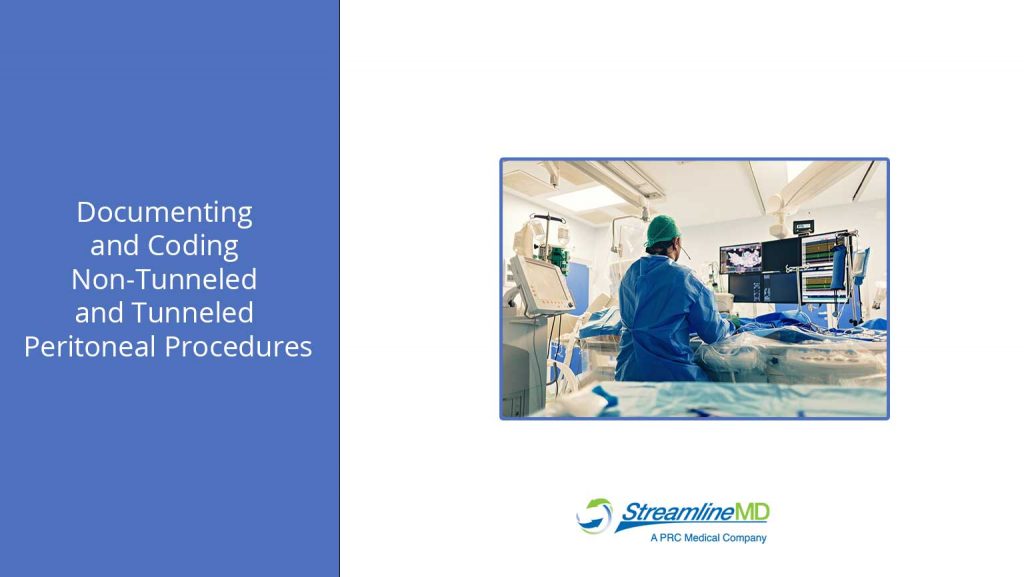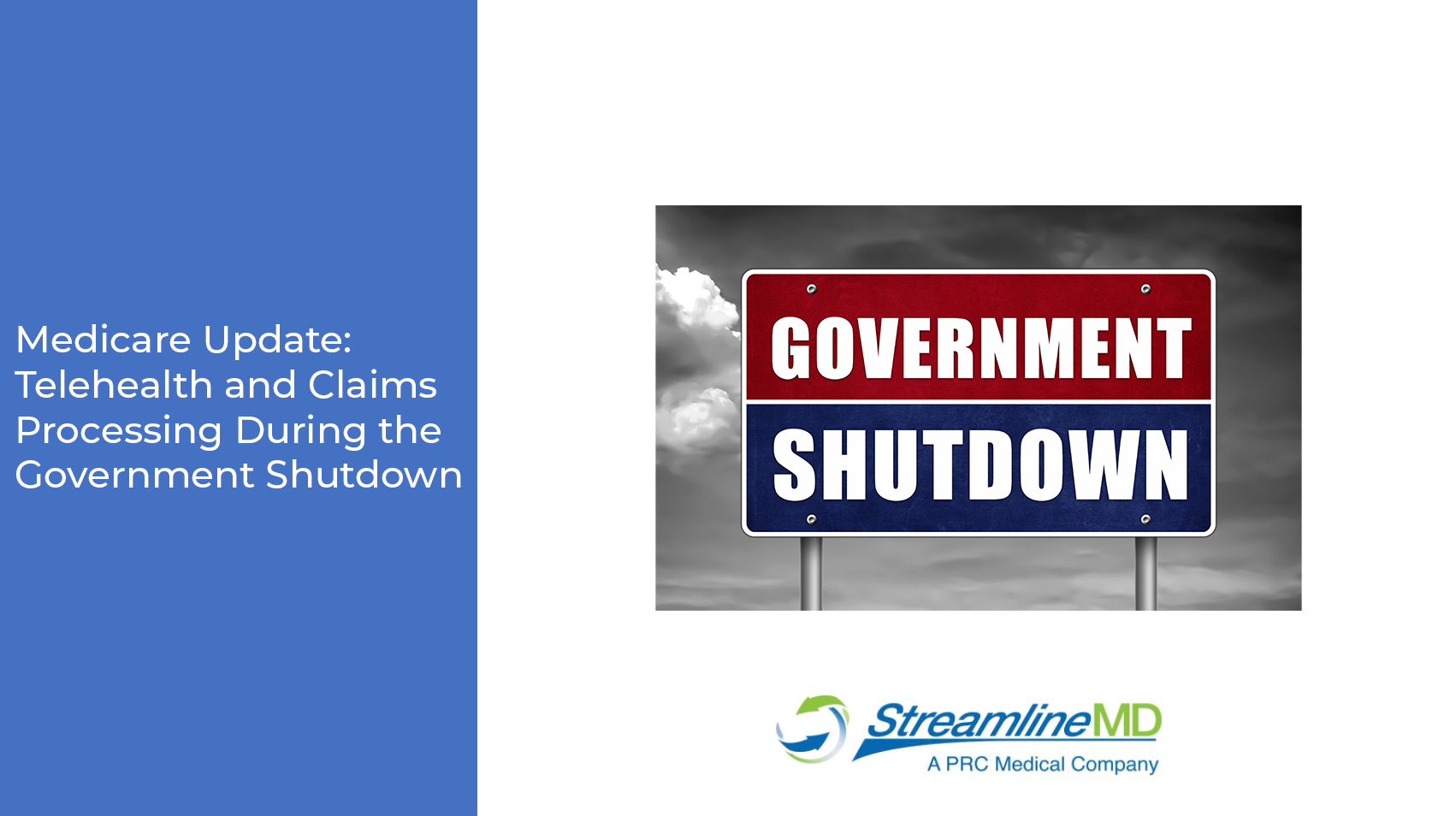Providers frequently ask for clarification on the documenting and coding Non-Tunneled vs Tunneled Peritoneal procedures. Because there are various diagnosis and procedure codes that can be assigned for Non-Tunneled and Tunneled Peritoneal procedures, the purpose of this article is to add clarity and spotlight how the documentation and coding for these cases can differ.
In today’s reality of declining reimbursements and increasing inflation, every dollar of Radiology and IR practice revenue counts. Your financial success is dependent on accurate coding and accurate coding is dependent upon proper documentation. The specific codes assigned to your procedures communicate to the payor the procedure performed along with the reason why it was medically necessary.
DIAGNOSIS CODE ASSIGNMENTS FOR NON-TUNNELED AND TUNNELED PERITONEAL PROCEDURES
Uses of the Procedures: Insertion of a non-tunneled peritoneal catheter can be used for short-term treatment of ascites or for temporary dialysis, while a tunneled peritoneal catheter can be used for long-term treatment of ascites, permanent peritoneal dialysis, or for chemotherapy administration.
Include the Reason for the Procedure: It is imperative to include clinical indications that explain the need for the procedure being performed. Merely stating “insertion of an intraperitoneal catheter” alone is inadequate and won’t meet medical necessity. Specify why the intraperitoneal catheter was needed (e.g., ascites, end stage renal disease).
Below are just a few examples of relevant diagnosis codes that indicate medical necessity, along with instruction supplied by ICD-10-CM:
Ascites:
- R18.0 Malignant ascites – Code first malignancy, such as: malignant neoplasm of ovary (C56.-); secondary malignant neoplasm of retroperitoneum and peritoneum (C78.6)
- R18.8 Other ascites – Ascites NOS; Peritoneal effusion (chronic)
Dialysis:
- N18.6 End stage renal disease – Chronic kidney disease requiring chronic dialysis; Use additional code to identify dialysis status (Z99.2)
Complications – Dialysis:
- T85.611 – Breakdown (mechanical) of intraperitoneal dialysis catheter
- T85.621 – Displacement of intraperitoneal dialysis catheter
- T85.631 – Leakage of intraperitoneal dialysis catheter
- T85.691 – Other (e.g., obstruction, perforation, protrusion) mechanical complication intraperitoneal dialysis catheter
- T85.71X – Infection and inflammatory reaction due to peritoneal dialysis catheter
- Use additional code to identify infection
Complications – Other than dialysis:
- T82.514 – Breakdown (mechanical) of infusion catheter
- T82.524 – Displacement of infusion catheter
- T82.534 – Leakage of infusion catheter
- T82.594 – Other (e.g., obstruction, perforation, protrusion) infusion catheter
PROCEDURE CODE ASSIGNMENTS FOR NON-TUNNELED AND TUNNELED PERITONEAL PROCEDURES
Choosing the correct CPT code is dependent upon the words used in the documentation, such as:
- Percutaneous vs. open
- Short-term vs. long-term
- Temporary vs. permanent
- Non-tunneled vs. tunneled
- Without a port vs. with a port
- Insertion vs. removal vs. chemotherapy administration
For further understanding, please review the following CPT code descriptions:
Non-Tunneled Peritoneal Catheter
- 46406 – Image-guided fluid collection drainage by catheter (eg, abscess, hematoma, seroma, lymphocele cyst); peritoneal or retroperitoneal, percutaneous
Tunneled Peritoneal Catheter
- 49418 – Insertion of tunneled intraperitoneal catheter (eg, dialysis, intraperitoneal chemotherapy instillation, management of ascites), complete procedure, including imaging guidance, catheter placement, contrast injection when performed, and radiological supervision and interpretation, percutaneous
- 49419 – Insertion of tunneled intraperitoneal catheter, with port (ie, implantable)
- 49421 – Insertion of tunneled intraperitoneal catheter for dialysis, open
- 49422 – Removal of tunneled intraperitoneal catheter
Chemotherapy Administration
- 96446 – Chemotherapy administration into the peritoneal cavity via indwelling port or catheter
Peritoneogram
- 49400 – Injection of air or contrast into peritoneal cavity (separate procedure)
- 74190 – Peritoneogram (eg, after injection of air or contrast), radiological supervision and interpretation
Additional Coding Tips:
- Imaging guidance is bundled into both insertion codes 49406 and 49418
- 49418 – includes contrast injection, catheter placement, and imaging guidance
- 49419 – Insertion of a tunneled intraperitoneal catheter with a port has a 90 day post-operative period, meaning 1 day before the day of the surgery, and then 90 days immediately following the procedure. Additional services are generally included
- 49422 – Can only be assigned for a removal of a tunneled intraperitoneal catheter
Assign an appropriate Evaluation and Management (EM) code when a non-tunneled intraperitoneal catheter is removed - 96446 – describes chemotherapy administration
- 74190 – is a professional code only; assign 74190-26 whether the place of service is facility or non-facility
SUMMARY
When documenting and assigning codes to non-tunneled and tunneled intraperitoneal procedures:
- Include the specific clinical indications that prompted the need for the procedure
- Use standard terminology that describes the procedure performed (e.g., non-tunneled, tunneled, with a port, percutaneous, open)
- Review codes and their descriptions and take note of what is included and excluded
References:
- 2022 ICD-10-CM Expert
- CPT 2022 Professional Edition
- April 1, 2022, NCCI Practitioner Edits
- 2022 Medicare Physician Fee Schedule




